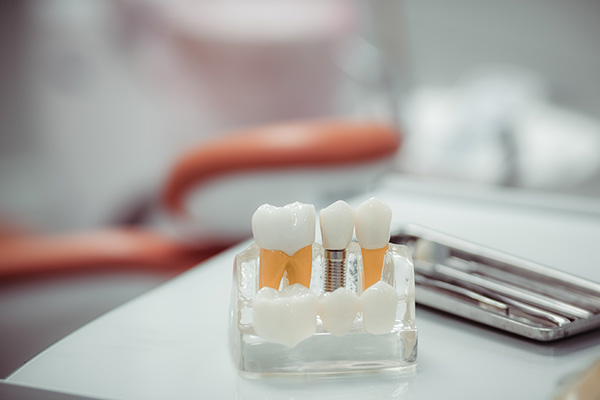What a Dentist Recommends for Dental Implants Aftercare

Dental implants are a popular way for people who are missing multiple teeth to restore functionality and create a better smile. The procedure takes place over several appointments and requires the patient to follow specific aftercare instructions. Following a dentist's aftercare directions closely is essential for a safer and faster healing process.
Aftercare procedures for implants
There are a variety of procedures that a patient must follow after receiving dental implants.
Begin proper care immediately
Aftercare starts as soon as the patient's implants are complete. Someone else should drive home after the procedure so the patient can rest right away. Avoid touching the implant area or rinsing the mouth too vigorously in the hours after the professional places the implants.
Control the bleeding
Typically, patients have some bleeding after implant surgery. Patients can expect this to last for several hours. It is important to apply pressure to the site as needed. Patients can achieve this by using two pieces of damp gauze. Place it over the extraction site and bite on it for up to 60 minutes at a time to apply pressure. Repeat this process every few hours. It is also a good idea to elevate the head. Expect to see a pink or orange tint to the saliva for up to three days after the procedure.
Manage the pain
There will be some pain after the procedure, but most of the time, the patient can remedy it with over-the-counter medication. However, it is important to use the right type of medication. Acetaminophen is the best choice. Over-the-counter NSAIDs, such as ibuprofen and naproxen, can interfere with the process of osseointegration.
Always stick to the dosage instruction on the packaging. Ideally, you should not take painkillers more often than every six hours. The discomfort and pain will typically ease up within about four days. If it does not decrease by then, contact a dentist for further instruction.
Minimize swelling and bruising
It is normal for the mouth to swell and bruise some after a procedure, and an implant procedure is no different. Typically, the patient will not see the swelling until about a day after the surgery takes place, and it will not peak until the second or third day. Overall, a patient may see signs of swelling and bruising for up to 10 days.
Using ice packs on the outside of the face for 20 minutes at a time during the first 24 hours can help reduce the swelling. Beginning at 48 hours, the patient should use a warm compress on the cheek. The patient can also help to reduce the signs of swelling by staying hydrated, sleeping propped up, and avoiding salt.
Conclusion
Dental implants are an excellent way to restore function to the mouth, improve the smile, and make a patient feel better about their overall appearance. Getting plenty of rest, taking over-the-counter pain medication, and managing bleeding, swelling, and bruising can help ensure the patient's healing process is safer and faster.
Request an appointment here: https://siegertdental.com or call Siegert Dental at (608) 394-3943 for an appointment in our Onalaska office.
Check out what others are saying about our dental services on Yelp: Dental Implants in Onalaska, WI.
Related Posts
One of the reasons why dental implants are a popular option for tooth restoration is that they are durable. With the proper care, they can last a lifetime. Maintaining your implants is not much different than caring for natural teeth, but you have to be diligent about dental hygiene to avoid problems that could cause…
Dental implants have always been the most stable restorations you could ever have. They are a level higher than traditional dentures or fixed bridges. Each implant mimics the basic structures of a natural tooth. It is stable on its own. Imagine what it would be like to have them replace your dental arches. If you…
Some patients who want dental implants do not have enough jawbone to support the implants. Bone grafting procedures can sometimes enhance the density and strength of the jawbone to make implants an option for these patients.During a dental bone grafting procedure, a dentist uses bone from another part of your body or from a human…
For many years, when a person lost a tooth because of decay or injury, the only solutions were dentures or bridges. Dental implants offer a permanent solution that more closely replicates the look and feel of natural teeth.Dental implants are small metal posts that replace the roots of missing teeth. Dentists attach crowns to these…
